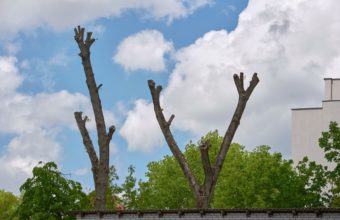The frequency at which trees should be trimmed or pruned can vary depending on several factors, including the type of tree, its age, its location, and its specific health and growth characteristics.
Here are few guidelines to consider when determining how often to trim trees…
- Routine Maintenance Pruning – Young trees benefit from regular pruning to establish a strong structure and remove any dead or diseased branches. This can be done annually or every 2-3 years during the tree’s early years to encourage healthy growth.
- Seasonal Pruning – Deciduous trees, which shed their leaves in the fall, are often pruned during the dormant season, typically in late winter or early spring, before new growth begins. This helps reduce the risk of disease transmission and minimizes stress on the tree. Evergreen trees can be pruned throughout the year but are often pruned in late winter or early spring as well.
- Pruning for Health and Safety – Trees should be inspected regularly for signs of disease, pest infestations, or structural issues. If you notice dead or damaged branches, branches that are rubbing against each other, or branches that pose a safety hazard, they should be pruned promptly, regardless of the season.
- Landscape Considerations – Trees in landscaped areas, such as ornamental trees, may require more frequent pruning for aesthetic reasons. The specific timing and frequency will depend on the desired shape and appearance of the tree.
- Tree Species and Growth Rates – Some tree species grow faster and may require more frequent pruning to maintain their shape and size. Conversely, slow-growing species may need less frequent attention.
- Local Climate and Environmental Factors – Local climate conditions, including wind, storms, and heavy rainfall, can affect tree growth and branch breakage. Trees in areas prone to severe weather may require more frequent inspections and pruning as needed.
Over-pruning or improper pruning can harm a tree’s health and longevity. Therefore, it’s advisable to consult with a certified arborist or tree care professional who can assess your specific trees and provide guidance on the appropriate timing and extent of pruning. Regular tree inspections and maintenance are to ensure the health and safety of your trees and the surrounding environment.






